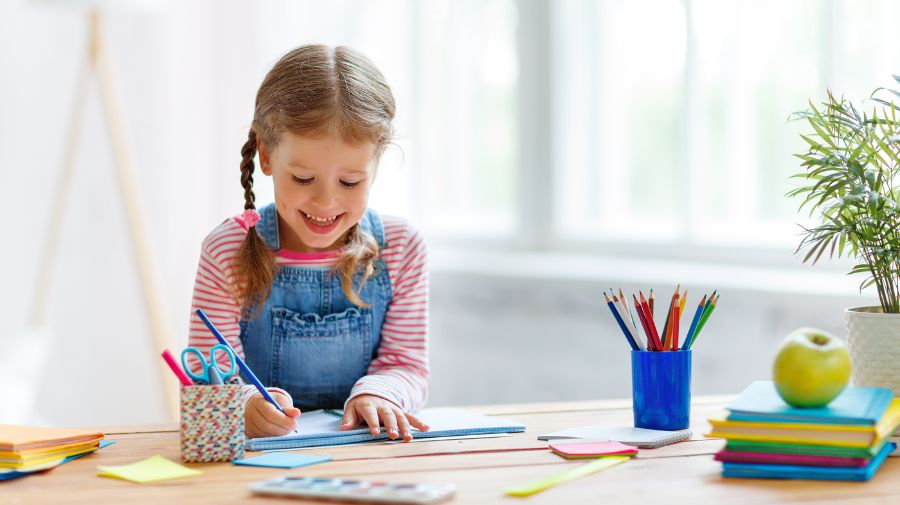Divorce is one of the most common adverse early life experiences a child is likely to experience. In fact, 40 to 50 percent of marriages in the U.S. end in divorce according to a recent article published by the APA. And a majority of those divorces occur in families with minor children. While most of the children of divorce grow up to be productive and well-adjusted adults, some exhibit significant emotional or behavioral struggles that may require intervention by a therapist. According to the American Association for Marriage and Family Counselors, 25 percent of children whose parents divorce experience persistent behavioral or emotional difficulties.
There are a few signs that a child may need professional help, including the child acting younger than they are, displaying separation anxiety, experiencing behavioral issues at home or school, engaging in compulsive behaviors, or having trouble sleeping at night.
Although each child responds to therapy differently, play therapy is one of the most promising interventions for children struggling with divorce. This intervention has some distinct advantages, especially when used with younger children or children struggling to accurately understand and verbalize their own emotional state. In this post, we’ll examine why play therapy is such an effective intervention, who can benefit, and how it can help. We’ll wrap up by exploring a generous sampling of play therapy techniques ready to put to use in your own practice.
Why play therapy works
The act of play creates neural connections in children that are vital for healthy development. Learning, social and emotional development, and even memory are built up and strengthened through play. For children who have experienced difficult life events or past trauma, play is even more important for healthy development. The effects of adverse experiences have been shown to reside in the nonverbal areas of the brain like the hippocampus, amygdala, thalamus, and brain stem, while the ability to communicate and work through these experiences is housed in the frontal lobes. The physical movements and role-playing activities that define play therapy assist in moving stored memories and sensations from the non-verbal parts of the brain to the frontal lobes, where children can successfully process them. Play therapy provides children a means for working through difficult experiences in a way that does not require verbalizing thoughts or expressing feelings directly.
Who benefits from play therapy and how it can help
Although there’s no hard and fast age cap for who can benefit from play therapy, it’s most commonly used to treat children under age 12. It’s most frequently used with children experiencing significant behavioral or emotional challenges, however, it has also shown promising results for use in treating a range of childhood issues — including posttraumatic stress, grief and loss, anxiety, depression, and mood issues. For children struggling with the effects of an adverse experience like divorce, play therapy can provide an outlet for processing the negative thoughts and feelings generated by such a significant life change.
Play therapy techniques
Now let’s dive into some play therapy techniques that are especially beneficial for helping children struggling with divorce-related issues. These diverse techniques are not only effective, they’re also enjoyable for children to engage in. After all, when you’re working primarily with children 12 and under, the techniques you use had better be fun! We’ve highlighted a handful of our favorites below.
- Toy phones — This technique allows children extra space to process therapeutic questions and prompts. Using toy phones is a fun, indirect way for a child to interact with you on difficult topics in a way that feels less threatening. If at any time the child is unwilling to continue the discussion, they always have the option to simply “hang up.”
- Color your feelings — With this activity, you provide the child with a small array of colored crayons or markers, with each color representing an emotion. When the child is comfortable and understands what each color represents, invite the child to begin coloring, using an idea starter — such as drawing and coloring in themselves, a heart, or globe shape. As the child colors, the choice of colors can serve as a visual representation of what types of emotions they’re experiencing.
- Storytelling — Children are often more willing to express their thoughts, attitudes, and emotions through the lens of a fictional character. The storytelling therapeutic technique seeks to leverage that willingness. To start, you explain how a story is usually told with a beginning, middle and end. You then invite the child to tell a story, explaining what the characters are feeling, doing, and thinking. As the story progresses, you can gain valuable insights into the child’s emotional state and thought processes by observing how the characters react to events happening in the story.
- Basketball game — This technique co-opts one of America’s favorite pastimes to help children struggling with challenging life events to begin to verbalize their feelings. It can also be used to help children deal with common misconceptions around divorce specifically. To begin, you instruct the child to try to throw a small, soft ball into an indoor basketball hoop. If the child “makes a basket,” they earn a small reward. If they miss, you invite them to respond to a question designed to help them express their feelings or address a common misperception.
- Dolls/Action figures — Action figures or dolls act as proxies as a child deals with stressful events. With this technique, you ask the child to use the dolls or action figures to act out a situation they find fearful or stress-inducing at home or school. During play, you closely observe the ways in which the child uses the toys to express their feelings and deal with the life event being acted out.
- Marshmallow people — This activity begins with an invitation for the child to complete a prompt like “When my parents argue I feel…” You then ask the child to create three figures using marshmallows and pretzels, with one figure to represent each parent and one to represent themselves. Then, you invite the child to act out a real life event they’ve witnessed at home (such as an argument between their parents, to match the example above). The child then practices having the marshmallow figure that represents themselves leave the room to go to a quieter place in the house while saying some type of affirming statement like, “Mommy and Daddy’s arguing does not mean they don’t love me. They love me very much.”
- Lego emotion house — To start this activity, you provide the child with several piles of Legos, each divided by color. You tell the child that each color represents a different feeling or emotion. You then invite the child to build a house based on how they’re feeling. As the child adds various blocks, prompt them to discuss the emotion they’ve chosen and ask them to provide an example of when they’ve felt that particular emotion.
For children struggling to successfully deal with difficult life experiences, play therapy offers an effective (and fun) way to unlock and process the effects of difficult life events, helping you work with children who can’t or are unwilling to verbalize their pain. And because there’s such a wide range of creative play therapy interventions available, you can customize the techniques you use to meet the diverse needs of young clients.





